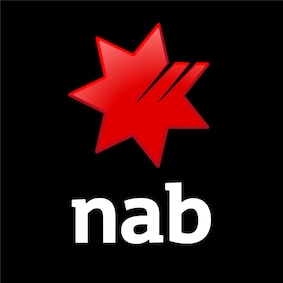Equity | What is equity and how you can use it - NAB
What is equity and how can you use it?
Equity is the difference between the market value of your property and the amount you still owe on your home loan.
Property value minus Amount owed equals Equity.
For example, if your home is worth $400,000 and you still owe $220,000, your equity is $180,000.
The great thing is that you can use equity as security with most lenders. This means you can borrow against your equity to fund life’s big purchases, such as:
- buying an investment property
- renovating your home
- investing in shares
- starting a business
- buying a car
- going on a holiday.
However, not all equity is available to access and borrow against. Here’s where useable equity comes in. Let’s explore what it means and how you can use it to purchase your investment property.
What is useable equity?
Lenders will typically lend you 80% of the value of your home – less the debt you still owe against it. This is considered your useable equity.
Let’s consider an example scenario:
Your home is valued at $400,000 and your mortgage is $220,000. Here’s the breakdown of sums:
- value of your property: $400,000
- value of your property at 80%: $320,000
- minus your mortgage: $220,000.
This means your useable equity is $100,000.
Since the bank is lending you money against the value of your home, they won’t lend you the full amount. Put simply, if property prices fall, they don’t want you to be in a negative financial situation with an outstanding loan that’s worth more than the market value of your property.
Keep in mind that it’s possible to borrow more than 80% if you take out Lenders Mortgage Insurance (LMI).
How to calculate your equity
To get a better idea of how much equity you have, check out our handy home equity calculator. The calculator gives you an idea of how much you may be able to increase your borrowing by, based on the useable equity in your home.
You can also get an estimate of your property equity by using the NAB app.
How much could you borrow for an investment property?
If you’re looking to use equity to buy an investment property in Australia, it’s important to first understand what your maximum property purchase price should be.
Use the rule of four, which suggests that to estimate the maximum purchase price of a property, you should multiply your useable equity by four. This means your investment property price should be no more than four times that of your useable equity. For this scenario, four multiplied by $100,000 (useable equity) means your maximum purchase price for an investment property is $400,000.
How much deposit do you need to buy an investment property?
You’ll need 20% of the investment property’s value to put down as a deposit if you want to avoid paying LMI.
Using our example scenario, the bank will lend you 80% (or $320,000). As the property costs $400,000, you’ll need to pay the remaining 20% deposit (or $80,000), which you can access from the useable equity you’ve got in your current home.
You’ll also need to factor in purchase costs such as stamp duty, legal fees and more. This may work out to approximately 5% of the purchase price – which in this example works to around $20,000 on a $400,000 property. Use our stamp duty calculator to help you estimate how much duty you need to pay.
Ways to build equity
Upgrade or renovate
Making upgrades and renovations can boost the market value of your home. But to avoid overcapitalising, it’s important to consider how much you’ll actually need to borrow.
Get a feel for how much it will cost by collecting quotes and speaking to others in your area who have recently renovated.
This will give you an idea of the costs you might not have thought about, as well as help work out the style and level of quality you’re hoping for.
Make larger or more frequent repayments
This can help build useable equity by reducing your loan balance.
Our loan repayments calculator can show you how much time and interest you can potentially save by changing your repayments. First, you’ll need to check if this option is available on your current loan.
Just note that for fixed rate loans, it might cost you to make changes to the loan or repayments prior to the expiry of the fixed rate period.
Make lump sum payments
If you have come into a lump sum of money, you might want to use it to pay down your home loan, but you’ll need to make sure that this option is available/permitted for your particular home loan.
Link your transaction account to 100% offset
You can reduce the amount of interest you pay by linking an eligible transaction account to a 100% offset facility. This can help you save on interest charged on your existing loan – and build equity in your property faster than you think.
Have a backup plan
Even if you have plenty of equity, it’s not always a given that you can borrow against it. Your lender will consider several factors including:
- your income
- your age
- any additional debts.
Remember to play it safe. If you don’t have any funds outside your home equity, then it’s risky to use every cent of your useable equity to invest in property.
You should consider having back up funds in case things don’t go to plan. Even if it means you can’t invest for a while, it’s important to keep yourself protected.
Unlocking all your equity to improve your lifestyle or wealth will increase your level of risk. That’s why it’s always a good idea to consider how much lending you take on.
To make sure you have a plan in place, it’s best to speak with an expert. Simply contact one of our home loan experts – they’ll help you figure out the best solution for your situation.
Ready to purchase your home?
Talk to our home loan experts today.
Explore other life moments
How rentvesting works
Whether you’re a first-time investor or a home owner ready to move out and rent, our rentvesting guide can help you get started.
Investing in property? Know the costs before you buy
Understanding the costs involved with an investment property.
Debt recycling explained
Discover how debt recycling works and what to consider before using it to pay off your mortgage faster and invest for the future.
Tools and calculators
Equity loan calculator
Evaluate your home’s equity and see how you could make it work for you.
View your home loan equity
Follow our step-by-step guide to learn how to view your home loan equity using online banking.
Home loan repayment calculator
Compare your loan amount with other factors to estimate your minimum loan repayments.
Contact us for home loan related queries
This is how you can get in touch.
Start a conversation with a banker
- Log into either NAB Internet Banking or the NAB app.
- Tap on the message icon.
- Type ‘speak to a person’ in the conversation window.
Call us
Speak to a home loan expert about a new or existing home loan.
Monday to Friday, 8:00am to 7:00pm (AEST/AEDT)
Saturday to Sunday, 9:00am to 6:00pm (AEST/AEDT)
Book an appointment
Make an appointment to see us at your nearest branch, ask a mobile banker to come to you or ask us to call you back.
Terms and Conditions
Apologies but the Important Information section you are trying to view is not displaying properly at the moment. Please refresh the page or try again later.
The information contained in this article is intended to be of a general nature only. It has been prepared without taking into account any person’s objectives, financial situation or needs. Before acting on this information, NAB recommends that you consider whether it is appropriate for your circumstances. NAB recommends that you seek independent legal, financial, and taxation advice before acting on any information in this article.
Always consider what the best solution is for your situation and be aware of what those commitments will mean to your lifestyle.





